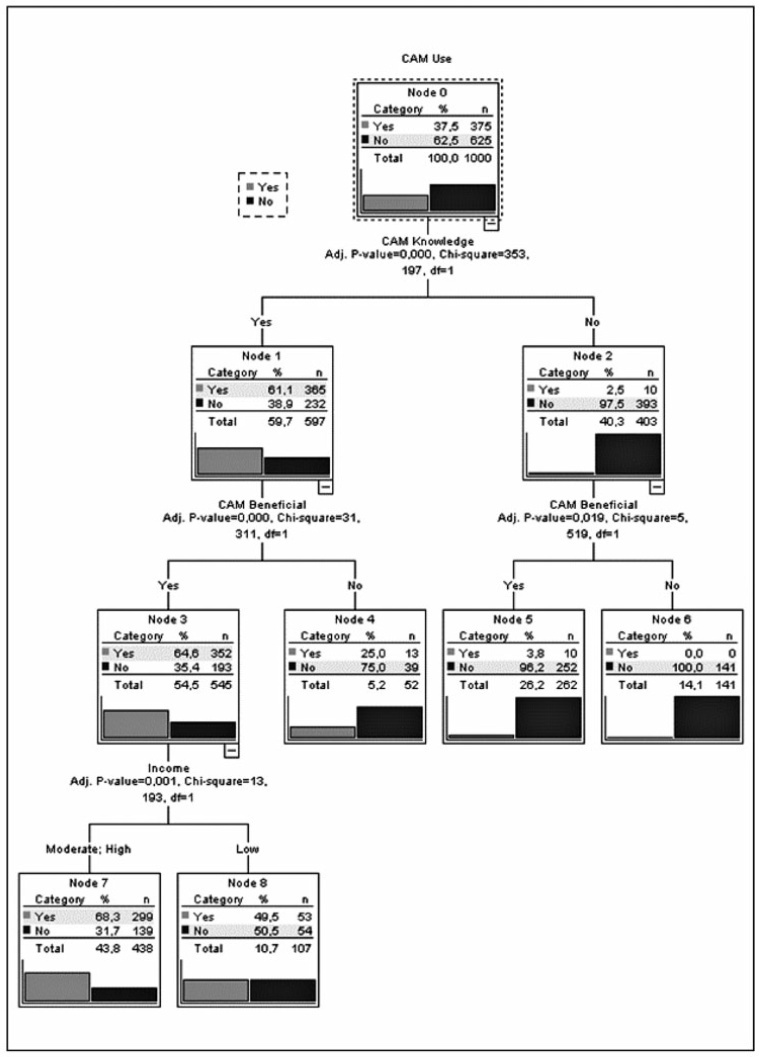Summary
Revista Brasileira de Ginecologia e Obstetrícia. 2021;43(11):853-861
01-12-2021
To evaluate the knowledge, attitudes, and behaviors regarding complementary and alternative medicine methods of patients who were admitted to gynecology outpatient clinics.
In the present survey, a questionnaire on complementary and alternative medicine practices was applied on 1,000 women (ages between 18 and 83 years old) who were admitted to the gynecology outpatient clinic of a tertiarymaternity hospital. Demographic features and knowledge, attitudes, and behaviors about these methods were inquired in face-to-face interviews.
While 80.7% of the total participants thought that complementary and alternative medicine was beneficial, only 37.5% of them had used these methods previously. The rate of prior knowledge on this subject was of 59.7% and the source of information was physicians for 8.5% of the patients. However, 72.4% of all participants wanted to obtain information on these methods and 93.7% wanted to be informed by physicians. In the decision tree model, having knowledge about complementary and alternative medicine was the most effective factor determining its use (p<0.001). Phytotherapy was found to be the most used method, with 91.4%. The most preferred plant was onion (18.9%), and the most common reasons for herbal use were stress (15.4%) and fatigue (15.2%).
More than one-third of the patients who applied to the gynecology outpatient clinics used one of the complementary and alternativemedicine methods at least once. As gynecologists and obstetricians, we need to be more knowledgeable about these methods to provide correct guidance to our patients for accessing accurate and effective information.

Summary
Revista Brasileira de Ginecologia e Obstetrícia. 2016;38(3):127-131
03-01-2016
The purpose of this study is to verify the use ofmedicinal plants by pregnant women treated at four Basic Health Units and at a public maternity facility in Brazil s northeast.
This is a cross-sectional, quantitative study, performed between February and April 2014. The subjects were 178 pregnant women, aged 18 to 42 years. To collect data, a structured questionnaire with dichotomous and multiple choice questions was used. To verify the correlation between the variables, Pearson s chi-square test was used.
The study showed that 30.9% of the pregnant women used medicinal plants, and boldo was the most cited (35.4%). All the plants utilized, except lemongrass, have toxic effects in pregnancy, according to Resolution SES/RJ N° 1757. There was no statistically significant correlation between social class and use of medicinal plants.
The health of the study participants and their unborn children is at risk due to the inappropriate use of medicinal plants.